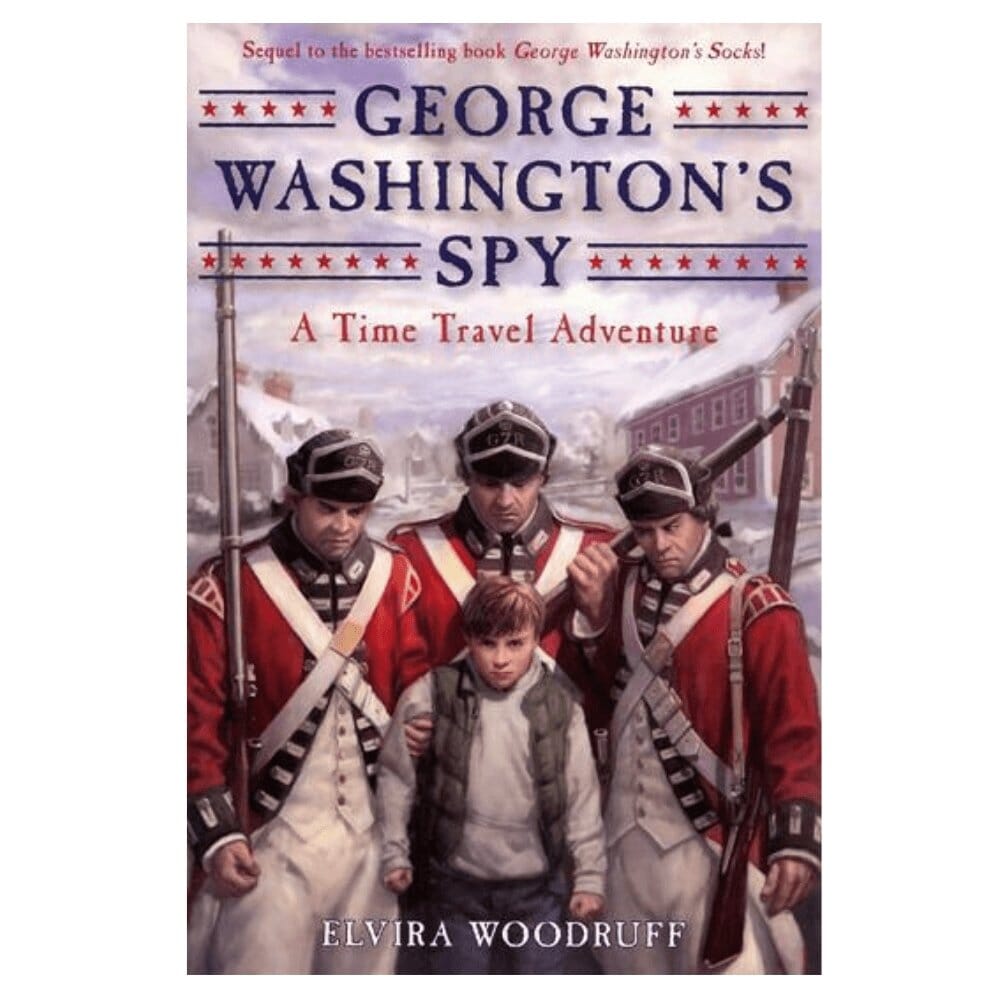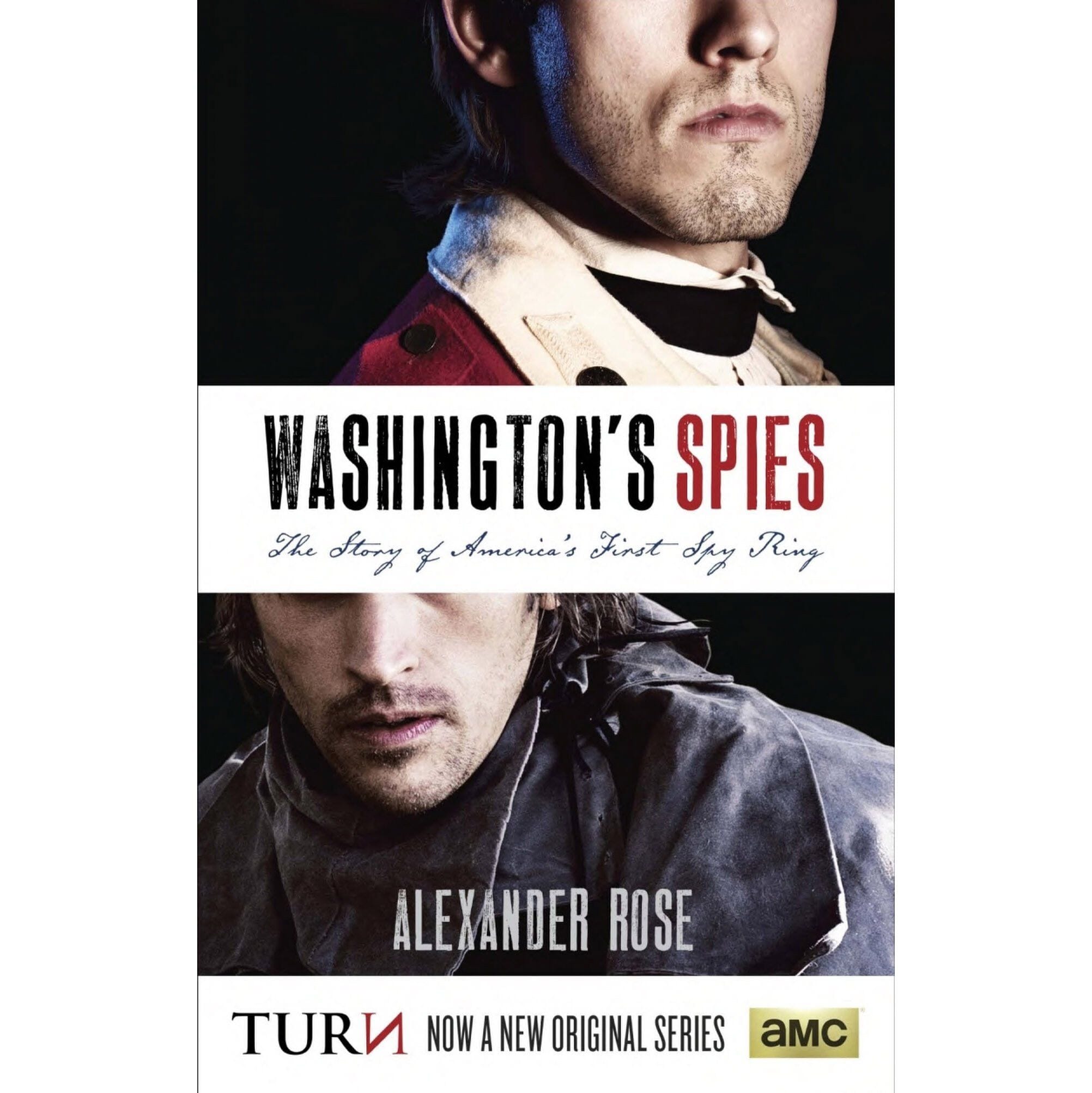Interest in the subject of spying and espionage operations during the American Revolution continues to grow in popularity. John A. Nagy, one of America’s leading scholars on the subject sat down with us to share his observations on the important role that espionage played during the war.

Spying seems like such a James Bond/Cold War topic. Did the Revolutionary War involve much espionage?
John A. Nagy: The earliest written record I found of spying dates back to the 6th century BC. So James Bond and the cold war is just the latest and therefore the most well known. After studying espionage in the American Revolution for the last twenty-two years, I have discovered that both the American and British relied heavily on espionage. In the eighteenth century each general was responsible for developing his own intelligence network. Obviously some were better than others. So far I have published 160 spies and have more than double that currently left in my database to be published.
Who were some of the more famous or effective spies of the Revolutionary War?
The most well-known spy is Nathan Hale who was hanged by the British. The best spy of the Revolutionary War depends on the criteria. The spy with best exploits would be James Moody, a New Jersey born British spy, was able to steal Washington’s mail almost at will. He almost stole the secret documents of the Continental Congress. He liberated a British officer from the Sussex County New Jersey jail. He operated as a spy for four years in New Jersey with a bounty offered for his capture. The one time he was captured he escaped.

The spy with the most nerve has to be Lieutenant Lewis J. Costigan of the 1st New Jersey Regiment. He was captured in January 1777. He was placed on parole in New York City which allowed him to walk around the city in his Continental army uniform. A parole was a promise from a prisoner of war that if he was released from jail that he would not take up arms or carry out any military acts until he was exchanged. He was exchanged on September 17, 1778 and no longer bound by his parole. At the request of Major General Lord Stirling and Colonel Matthias Ogden, Costigan did not leave New York City as he should have. He continued his usual travels around New York City in plain sight in his American military uniform collecting information and sending his correspondence through Colonel Ogden and Lord Stirling to George Washington using a code name. If his espionage activities would be discovered, he could not be treated as a spy since he was in uniform. He would have been a prisoner of war. He remained in New York City gathering intelligence for four months until January 17, 1779.
One of the most well known is Robert Townsend, known as Samuel Culper Jr., of the Culper Ring. He operated in New York City. There are other American spies living in New York City at the same time as Townsend but have not gained his level of notoriety.

We hear a good deal about the Culper Spy Ring. Were there other spy networks in operation during the war?
The first spy ring was the Mercereaus which began operating in 1776 when the British military first landed in New York. It operated between Staten Island, New York and New Jersey. Some of the participants of the Mercereau spy ring continued operating to at least October 1780 but with Elias Dayton as the case officer. The British ran the Molesworth spy ring in Philadelphia in the spring of 1777 to entice ship captains who knew the underwater defenses in the Delaware River to help them bring British warships to Philadelphia. Washington had a stay behind intelligence network established when Philadelphia fell to the British. It was the Clark spy ring which operated in the fall of 1777. Because of the success of the Clark spy ring, Washington in 1778 directed that a similar operation be established in New York and it resulted in the third American spy ring, the Culpers.
How would you evaluate George Washington as a spymaster?

Washington was an excellent spymaster. Spies were always paid in hard currency that is gold and silver. The British had more spies in operation during the war because they could pay more. They obtained more information. Obtaining hard currency was always a problem for Washington. He was always at a disadvantage in the volume of information collected because of the lack of hard currency. He worked diligently to make sure that he was not deceived. He always compared the intelligence gathered by one spy with that provided by other spies and information obtained from British deserters and locals. He was better in the military application of intelligence than the British.
Washington learned his spycraft during his service in the French and Indian War. He recruited and managed spies. He provided French spies with misinformation. He served under British Major General Edward Braddock who used a cipher and Washington may have used it. Braddock’s cipher is published in my book Invisible Ink Spycraft of the American Revolution.
Did Washington’s spies ever uncover anything of great value?
Washington’s spies (the Clark spy ring and the Darraghs) in Philadelphia provided intelligence that the British army was coming out in force (10,000 men) to attack the Continental Army at White Marsh. Washington prepared for the attack and after three days of skirmishes and not being able to engage Washington in a major battle, the British returned to Philadelphia. The Culpers warned Washington of the British plan to attack the French as they landed in Rhode Island. Spies by reporting the type of supplies being loaded on British transports were able to indicate the length and probable destination of the troops.
As you detail in your book, both sides used invisible ink. How sophisticated was the secret ink? Was it all just lime juice?
Lime juice as well as milk, vinegar, lemon juice, and anything acidic will weaken the fibers of the paper. When heat is applied to the document, the weakened fibers turn brown faster than the fibers that are not weakened and the message is visible. They also used sympathetic inks. You would write with one chemical and the writing would disappear. By applying a second chemical to the first would cause a chemical reaction and the writing would be made visible again. There were several sympathetic ink formulas available at the time of the American Revolution. George Washington believed that he and Royal Governor William Tryon used the same formula of sympathetic ink. Washington in 1780 had a log building constructed at Fishkill, New York to manufacture the “medicine” as they called sympathetic inks.
Tell us more about some of the more prominent secret codes used during the war.
One of the methods used in the Benedict Arnold conspiracy was a one letter shift. Where the letter A is represented by Z, B by A, and C by B. Construct a chart then decode “HAL” which was the name of computer in the movie “2001 a space odyssey.” Answer at Bottom
The most universally used cipher is the pigpen or as we would call it a tic-tac-toe cipher. It was used by the American, British, French, and there is even a Hessian diary that used it. You make up a tic-tac-toe table and place three letters in each box. Say the upper right is GHI then L would represent G, L` would be H, and L`` would be I. They liked to use dictionaries because at the time they had two columns to a page and they were readily available. A dictionary code written as “9 4” would represent the 9th page, first column, and the 4th word down. To represent the second column place a dot above the second number.
Learn More: The Culper Spy Ring Codes

How do these secret codes hold up to today’s practices in the intelligence world?
The modern intelligence world still uses most of the intelligence methods from the American Revolution but with more sophistication in its encryption. During the American Revolution they used dead drops where a message is left at a location and the intended agent comes and picks it up. Robert Hanssen, the FBI agent who was spying for the Russians, left his messages under a wooden bridge in Vienna, Virginia. When he was caught in 2001, he reportedly used the dead drop twenty times. In the 1950’s a Russian spy in New York City used a hollowed out coin to hide messages. Modern British spies were alleged to have used an electronic rock as a receiver and transmitter of messages. Codes and ciphers are still being used today. We use them more then we realize. Your computer can encrypt your messages and banking transactions on line for you.
About the Author

John A. Nagy was an award-winning author and a scholar in residence at Saint Francis University. He served as a consultant to Colonial Williamsburg and the University of Michigan on espionage. He was a founder and past President of the American Revolution Round Table of Philadelphia. He appeared on radio and television such as the History Channel, C-SPAN, and local educational TV. He was the subject of two one-hour interviews on the Pennsylvania Cable Television Network. Podcasts of his talks are available at Youtube, Itunes, C-SPAN, Scientific American Magazine, and New York Military Affairs website.
His books are Rebellion in the Ranks Mutinies of the American Revolution; Invisible Ink Spycraft of the American Revolution; Spies in the Continental Capital: Espionage Across Pennsylvania During the American Revolution; and Dr. Benjamin Church, Spy: A Case of Espionage on the Eve of the American Revolution.
Mount Vernon hosted an Evening Book Talk by Nagy in the Rubenstein Leadership Hall at the Fred W. Smith National Library.

Shop
Explore Mount Vernon's collection of spycraft objects available for purchase.





